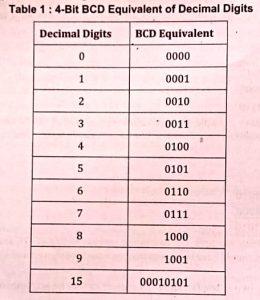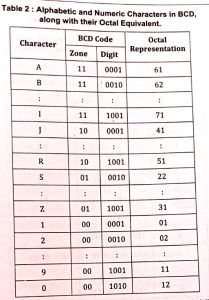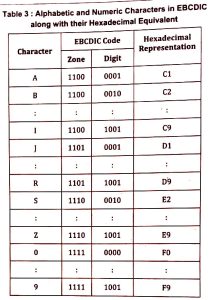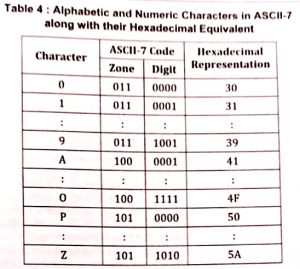BCA 1st Year Different Codes for Character Representation Notes Study Material
Semester Wise BCA 1st Year Different Codes for Character Representation Notes Study Material: If you choose to do a Bachelor of Computer Applications, it is BCA. BCA is a three-year program in most universities. After getting enrolled for BCA, there are certain things you require the most to get better grades/marks in BCA. Out of those, there are BCA Notes and BCA Semester Wise Notes Study Material, BCA Question Answers along with Previous Year Papers.
At gurujistudy.com you can easily get all these study materials and notes for free. If you are a BCA Student there is a single-stop destination as far as preparation for BCA Examination is concerned. Here in this post, we are happy to provide you with the Topic Wise & Chapter Wise BCA 1st Year Different Codes for Character Representation Notes Study Material.

BCA 1st Year Different Codes for Character Representation Notes Study Material
Computer Codes: Representation of Characters
There are many characters used in computer. These characters are: alphabets (A,B,…,Z, a, b…,z), digits (0, 1,…,9) and special characters (+,-1,-*.#, ! etc.). These characters are used to form different values used for processing.
The point to discuss here is that how binary numbers are coded to represent all the characters in computers. Many coding schemes have been developed over the years for the representation of these characters. Most commonly used computer codes are BCD, EBCDIC and ASCII.
1. BCD Code: The Binary Coded Decimal (BCD code is one of the early memory codes. It is based on the idea of converting each digit of a decimal number into its binary equivalent in four bits (Note that we are not talking about converting the entire decimal value into a pure binary form).

As shown in the table 1, group of four bits is used to represent one digit (character) in BCD. This 4-bit BCD coding system can be used to represent only decimal numbers because four bits are insufficient to represent the various characters used by a computer. Instead of using four bits with only 16 (24) possible characters, computer designers commonly use 6 bits to represent characters in BCD code.
Computer Codes: Representation of Characters
In the 6-bit BCD code, the four BCD numeric place positions are retained but two additional zone positions are added. With six bits, it is possible to represent 64 (26) different characters (26 alphabets, 10 digits and 28 special characters). Table 2 lists all the alphabets and digits with their BCD codes.

Note that 6-bit BCD code can be easily divided into two 3-bit groups. Each of these 3-bit groups can be represented by one octal digit.
Disadvantage: The major problem with BCD code is that only 64 (26) different characters can be represented in it. This is not sufficient for providing a large number of characters. (BCA 1st Year Different Codes for Character Representation Notes Study Material)
2. EBCDIC Code: In 6-not BCD code, only 64 (26) characters can be represented, which is insufficient so, BCD code was extended from a 6-bit code to an 8-bit code. The added 2 bits are used as additional zone bits, expanding the zone to 4 bits and this resulting code is called the extended binary-coded decimal interchange code.
EBCDIC code was developed by IBM (International Business Machine and it is used in most IBM models and in many other computers. In this code, it is possible to represent 256 (28) different characters. In addition to the alphabets (both upper-case and lower-case) and digits, it allows a large variety of printable and non-printable control (i.e., special) characters. Control characters are used to control such activities as printer vertical spacing, movement of cursor on the terminal screen etc.
Computer Codes: Representation of Characters
Because EBCDIC is an 8-bit code, it can be easily divided into two 4-bit groups. Each of these 4-bit groups can be represented by one hexadecimal digit. Table 3 lists alphabetic and numeric characters represented in EBCDIC code.

3. ASCII Code: American Standards Association developed ASCII. ASCII stands for American Standard Code for Information Interchange. It has been adopted by several American computer manufacturers as their computer’s internal code.
This code is commonly used in data-communications and it is used almost extensively to represent data internally in microcomputers and is frequently found in the larger computers. Documentation files and program source code files are usually stored characters coded in ASCII. ASCII is of two types: (a) ASCII-7 and (b) ASCII-8.
(a) ASCII-7: ASCII-7 is a 7-bit code, using which 128 (27) different characters can be represented. The first three bits are used as zone bits and the last four bits indicate the digit. Note that microcomputers using 8-bit byte (as the smallest unit) use the 7-bit ASCII by leaving the leftmost first bit of each byte as a 0. Table 4 lists all the alphabetic and numeric characters with their ASCII-7 representation.

(b) ASCII-8: ASCII-8 is an extended version of ASCII-7. It is an 8-bit code that allows 256 (28) different characters rather than 128. The additional bit is added to the zone bits. Using the table 5, you will notice that other than the zone-value differences, ASCII-7 and ASCII-8 are identical. Table 5 lists all the alphabetic and numeric characters coded in ASCII-8.

Similarity between ASCII and EBCDIC
In case of ASCII-8 and EBCDIC codes, there are some similarities between them. These are:
1. Both are 8-bit codes.
2. Both can represent alphabets, digits and many control characters.
3. Both are very popular and used in many types of computers.
Difference between ASCII and EBCDIC
In case of ASCII-7 and EBCDIC codes, there are some differences between them.
These are:
1. EBCDIC has a wider range of control characters than ASCII.
2. EBCDIC uses the full 8 bits available to it, so parity checking cannot be used on an 8-bit computer system. Parity checking can be used on ASCII-7.
Chapter Wise BCA 1st Year Computer Fundamentals and Office Automation Notes Study Material